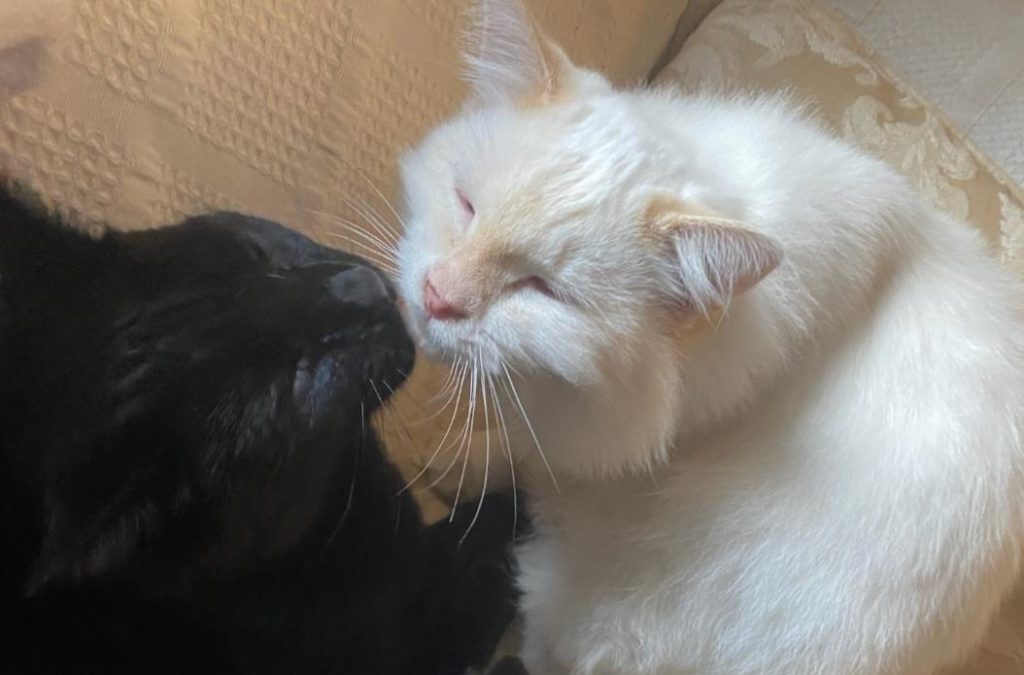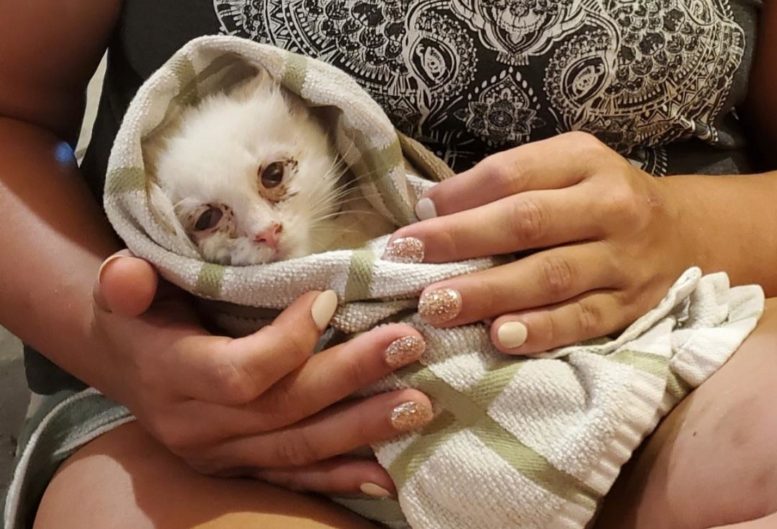By JAN LARSON McLAUGHLIN
BG Independent News
Don’t call them “cat ladies.” They are more like the neutering neighbors.
Connie Donald was walking her two dogs earlier this year when a stray cat took a running leap and “face planted” on one of her dogs – digging its claws into Suki’s head and biting her. If it weren’t so frightening, it would have been cartoon-like, with the cat splayed out and latching onto the dog’s head, Donald said.
Suki was left bloodied, with a couple cat claws embedded in her head.
The cat, it turns out, was protecting a litter of kittens under a nearby bush.
For the past year or so, Donald had noticed an increase in stray cats in her neighborhood of West Evers Street since the city ended its animal control program.
So after the cat attack, she started talking with neighbors about the growing number of stray felines.
“There’s way too many cats. We need to do something,” Donald said. “These cats are reproducing all the time.”
A couple meetings were held, and the group came up with a game plan of trapping the cats, and getting a veterinarian, humane society, or Humane Ohio to spay or neuter them. The group would then release the wilder ones back into the neighborhood, and find homes for the tamer kittens.

“We like cats and community cats do a service by taking care of any rodents. But we wanted a humane way to tame the overpopulation,” Donald said.
But getting appointments to get the cats neutered turned out to be the biggest challenge. Humane Ohio was busy with Lucas County cats. The Wood County Humane Society gave the neighborhood group a couple appointments a month. So the women approached Dr. Huff at Midway, who offered to fix the cats for $50 a piece, and gave the group several appointments each week.
The nine neighbors – who would prefer to not be called “cat ladies” – raised more than $2,600 to finance their plan. They borrowed live traps, having to jerry rig some of them so they worked.
They lured the cats, and an occasional opossum, into the traps with sardines.
“Before you knew it, we trapped and financed spay/neuter for over 50 cats just in our little neighborhood,” Donald said.
By the end of the summer, 82 cats were fixed.
“We’ve gotten all the females,” said Linda Savage, of the neighborhood neutering group.
“We don’t want to hurt cats. It’s good to have cats in your neighborhood that keep the rodent population down,” Savage said.
But there are limits.
“It’s positive to have 10 in a neighborhood – not 100,” Donald added.
Some of the more prolific males – which they have named Mr. Gray and Uncle Jerry – have also been caught and neutered. But the neighborhood group is still trying to catch the ever elusive cat they have dubbed “Morris,” who they believe has fathered many of the stray kittens in the area.
Each cat has its left ear snipped before being released back onto the streets, so the group can tell which cats still needed surgery.
One neighbor volunteered her garage for a surgical recovery area for the adults, and a nursery for the kittens. Chairs were set around for neighbors to come in and help the cats socialize with humans.
“Some got socialized and some didn’t,” Savage said.
The group nursed 20 kittens to health and placed them in adoptive homes.
Donations came in from many people, and Donald regularly posted photos on Facebook of the cats that had been operated on. Each post began with “Today’s spays and neuters were sponsored by …” crediting those who paid for that day’s surgeries.
The cat crew knows that stray felines are a problem elsewhere in Bowling Green. They believe the city needs some type of trap-neuter-release program for those areas becoming overpopulated.
“We’re sure we’re not the only ones in town having this problem,” Savage said.
“The problem is not going to go away on its own,” Donald said.
A female cat can have three to four litters a year, with each batch having four to six kittens, Donald said.
“Those kittens are born and raised on the streets,” she said. “The townspeople really need a place to put them.”


